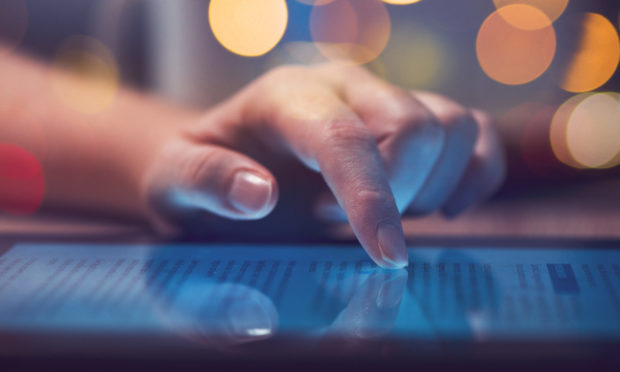Until recently, we were losing interest in politics and current affairs. “They’re all the same,” would be a common response when reporters asked passers-by who they intended to vote for in an election.
Newspaper readership was plummeting and TV news audiences were doing the same.
Instead we seemed content to get our news summed up in 140 characters or less via social media. The most common opinion was that the news was “too depressing”. In my former life as a journalist I would often be asked: “Why are you only interested in bad news?”
Well, now that there is loads of bad news and it’s really depressing, we can’t get enough of it. The Guardian’s website audience has doubled and the Financial Times has seen its website figures grow by 250%. Many newspapers, from broadsheets to tabloids, have seen record readership figures.
Government announcements and briefings directly affect our lives. How many deaths? What impact will this have on the lockdown? When will our children go back to school? When can I see my friends and relatives?
In the midst of a crisis we turned to trusted sources of information we had previously abandoned. As well as newspapers, we switched the TV news back on. The audience of Channel 4 News doubled in 10 days.
However, the very news organisations which are now proving so valuable in providing information, analysis, and fact checks are facing their toughest trading conditions ever.
As shops closed, the revenue from printed newspapers collapsed. Locked up in our houses, we all turned to online news sources which rely solely on advertising. Yet many of the advertisers were facing huge losses and slashed their budgets. Those who were still trading would not allow their adverts to appear alongside articles about coronavirus, meaning that the majority of advertising spaces became increasingly worthless.
The Independent saw its ad market fall by 50% in April – the equivalent of hundreds of thousands of pounds in lost revenue. Other newspaper groups across national and local papers reported large losses.
At the same time, newsrooms had to implement safe working practices. STV has temporarily abandoned its popular north-east evening news programme and replaced it with a programme for the whole of Scotland, so that it can observe social distancing measures.
STV also now says that achieving even single-digit growth in advertising revenues will be “challenging”.
More than 2,000 news industry employees have been furloughed, at the very time when we need them most. They are the lucky ones. The news industry relies heavily on freelance reporters, photographers and other specialists. Many will have lost their income overnight.
When there is a lack of sensible, informed, trusted sources of information, people have a tendency to fill in the blanks themselves.
More than 77 5G phone masts have now been attacked as a result of the most ludicrous conspiracy theory it is possible to imagine.
An investigation by the Press Gazette recently found misinformation and conspiracy theories being widely promoted on YouTube – including conspiracy theories linking Microsoft billionaire Bill Gates and big pharma companies to the Covid-19 outbreak.
A Scottish friend in Beijing recently told me life is more difficult due to a belief that foreigners brought coronavirus into China. Are the Chinese citizens who believe this behaving any differently from the British citizens who attack phone masts?
Worryingly, the Press Gazette’s investigation found a YouTube video calling for the “execution” of mainstream media which had “lied and lied and lied”. It had been viewed more than 80,000 times.
So what can we do? Wringing our hands and complaining about social media is clearly not the solution, especially as social media has kept many of us sane during this lonely and isolated time.
If you are reading this you are already supporting the industry. Influence the next generation. Our children are taught about trustworthy sources of information in school, but their actions tell a different story.
Having been shocked by the ridiculous “facts” my children were getting from YouTube videos, I spend a few quid on a subscription to a weekly news magazine for children.
For months it lay unread on the kitchen table whilst I read my online paper over breakfast. Then, one day, one of my sons picked it up and showed me the interesting stories. That sparked a bout of jealousy in my other son, who made sure he got to the breakfast table before his brother the next day. Now they both read it, and fight over it, every weekend.
Sometimes, but probably not often enough, I insist that we switch off the Simpsons and watch the evening news. It doesn’t make me popular but it does spark questions, which means they are learning.
We have to support the British news industry and the journalists, photographers, camera crews and other specialists who work in it. They are not perfect, but they unpick the spin, expose hypocrites and confront conspiracies. They’ve got our backs. Have we got theirs?
Eleanor Bradford is a former BBC Scotland health correspondent who now works in communications in the education sector
